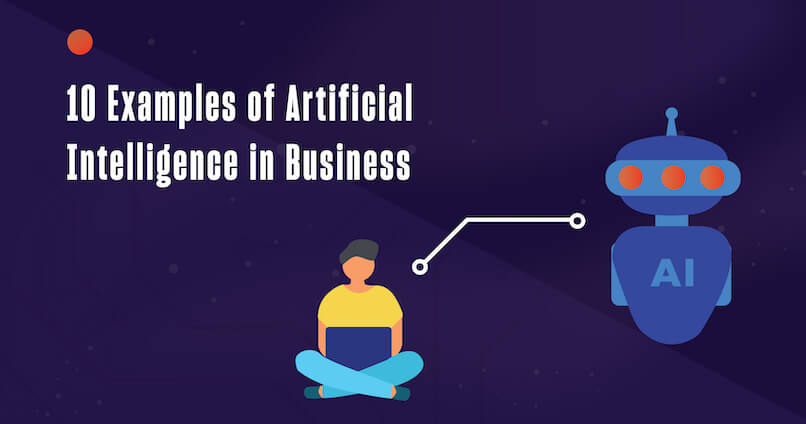Globally, the information technology (IT) services market continues to experience rapid growth, as studies show significant increase in demand for technology services, ranging from cloud computing to e-commerce and cybersecurity services, driving a projected record $1,420.00 billion USD in revenue for 2024 and a further projected market volume of $1,879.00 billion by 2029.
As more organizations come to rely on technology to drive their digital transformation and perform everyday tasks, the ability to properly integrate IT services into daily operations in a responsible and meaningful way becomes increasingly important.
Good IT management is essential to ensure that a business’s IT processes and systems are cost-efficient, secure and regularly updated. In the same way, a good information technology manager can ensure that any organization or enterprise remains competitive and profitable through effective management of its IT division.
What Is IT Management?
Information technology management refers to the comprehensive approach taken by teams or individuals within an organization to ensure that information systems operate efficiently and effectively. It encompasses the oversight of all aspects of an organization’s IT infrastructure, including hardware, software and network components.
As Gartner defines it, IT management has to represent the “core value components” of IT operations. This means that IT management needs to oversee more than just programming or managing resources; it has to ensure that technology services are delivered in a way that:
- Coordinates complex systems and processes
- Supports an organization’s goals and operations
- Helps people work more productively and efficiently
- Provides clear communication with all stakeholders
And these responsibilities include not only the maintenance and administration of current IT systems, but also strategically planning for future technology integrations and adaptations.
Why Is IT Management Important?
IT management plays a crucial role in the seamless operation and strategic growth of modern organizations, especially in an era dominated by digital technology. IT management is essential in:
- Supporting Business Strategy: Obviously, good IT management is vital to the success of the IT department, but its impact actually extends across the entire organization. Effective IT management aligns technology with business strategy, facilitating better execution of business plans and enhancing organizational agility. This alignment is particularly crucial in industries that rely heavily on IT services, such as those requiring automation, continuous data processing and always-on connectivity.
- Enhancing Security and Reducing Risks: As an increased reliance on IT services heightens an organization’s vulnerability to outages, data breaches and cyber attacks, effective IT management is essential in implementing robust security measures to safeguard information systems. According to an IBM report, the global average cost of a data breach reached $4.45 million USD in 2023, marking a 15% increase over three years. Inadequate IT management can damage not only the bottom line of a company, but also its reputation.
- Maintaining a Competitive Edge: IT management is integral to leveraging current organizational resources efficiently while staying ahead of the competition. As industries evolve, the ability to swiftly integrate new technologies and optimize existing infrastructure becomes essential. IT management ensures that an organization not only keeps pace with industry standards, but also secures a competitive advantage by adopting innovative solutions.
- Driving Productivity and Efficiency: IT management has a direct impact on operational efficiency by ensuring that IT systems are aligned with business operations, secure, available and operating at peak efficiency. Good IT management reduces downtime and streamlines operations, which in turn leads to cost savings and sustainable growth for an organization.
What Does an IT Manager Do?
Skills and Responsibilities
The specific responsibilities for an information technology manager will differ based on their position, organization and industry. IT managers need a solid foundation of technical skills, such as expertise in certain programming languages, experience with enterprise applications and familiarity with specific frameworks and server operations. However, they also need a solid set of soft-skills, including critical thinking, innovation, creativity, problem solving and communication.
For the most part, an IT manager’s responsibilities will include:
- Aligning IT systems and processes with business objectives
- Planning, scheduling and executing IT projects
- Managing IT budgets, resources and timelines
- Monitoring and updating IT security and compliance
- Optimizing the operation of IT infrastructure
- Implementing new software, hardware and data systems
- Overseeing and advising IT staff
Staying Informed
An IT manager’s responsibilities will certainly change over time due to industry disruptions and technology innovations. To remain effective in their role, today’s IT managers need to foster a culture of innovation and creative practices within their team — such as through Agile leadership practices — and should stay up to date on the latest trends in platforms, software and infrastructure.
While it’s always challenging to predict what’s next, as of the publishing of this article, it’s recommended that IT managers should be familiar with:
- Analytics solutions to help make more informed decisions based on reliable data
- Cloud computing to select the right providers to deliver needed services, performance and scalability
- AI and cognitive computing to optimize processes and generate insights to make better decisions
- Security and compliance to facilitate risk management and maintain a system’s integrity
- IoT platforms to effectively and efficiently deploy IoT capabilities
- DevOps tools to enhance collaboration between development and operations teams
No matter if you’re a future or current IT manager looking to keep your skills current, acquiring IT management certifications can provide important benefits for any stage of your career.
Similar Roles
While IT manager is a specific position, there are other, similar roles that may share some of the same responsibilities. Depending on the structure of the organization, these roles could report to the IT manager, work in collaboration with the IT manager or even take the place of a traditional IT manager. These positions can include:
- IT project manager — Oversees all aspects of a project, from initial planning through completion, ensuring it is completed on time, within budget, and meets the project specifications and stakeholders’ expectations. They coordinate the efforts of team members, manage resources and communicate project statuses to higher-level managers and stakeholders.
- IT security analyst — Protects an organization’s computer systems and networks from cyber threats by assessing current security measures, monitoring for potential vulnerabilities and implementing strategies to defend against cyber attacks. They’re responsible for educating employees on security protocols and staying updated on the latest trends and technologies in cybersecurity.
- IT director — Oversees the information technology department within an organization, setting the overall strategy and ensuring alignment with business objectives. They manage all IT resources, budgeting and staffing and are responsible for overseeing the development and implementation of IT policies and systems.
IT managers and similar mid-level management positions will report to senior executives, often either a Chief Technical Officer (CTO) or Chief Information Officer (CIO).
IT Management vs. IT Leadership
The comparison between leaders and managers is a pretty well-worn comparison in business. In IT, though management and leadership sometimes are used interchangeably, both can carry distinct roles and responsibilities within an organization. Both roles are critical, but they can operate at different levels and with different focuses within an organization.
In general, the major differences lie in their:
- Method of Influence — Where IT managers typically operate through positional authority, leadership in IT is less about formal authority and more about the ability to inspire, motivate and guide others. A manager’s influence is often directly linked to their formal responsibilities and organizational power, whereas a leader in IT may earn their influence through their seniority, institutional knowledge and ability to inspire and support others.
- Scope of Role — IT managers are usually responsible for the operational aspects of the IT department, while IT leaders may focus on the broader, strategic role of IT within the organization. An IT leader will set a long-term vision for how IT can enhance business performance and competitiveness and, while the same can be true for IT managers, they may be more concerned about meeting short-term goals and performance metrics.
- Focus on Development — Managers are essential for maintaining the stability and efficiency of IT operations, with a focus on managing day-to-day resources and tasks within the set parameters of current systems and practices. Leaders can do the same, but are expected to take a more proactive approach by preparing their team and the organization to adapt to future challenges. This can include adopting new technologies, investing in training or pushing for more innovative solutions.





